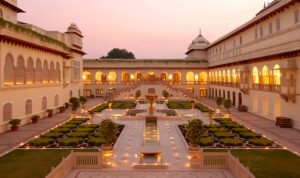When India gained independence in 1947, it inherited a nation riddled with poverty, illiteracy, and colonial damage. The newly independent country faced massive challenges—partition trauma, refugee crises, poor infrastructure, and a stagnant economy. Yet, through vision, determination, and democratic governance, India began its journey toward growth and transformation.
Laying the Foundations (1947–1960s)
The early years were focused on nation-building. Under the leadership of Jawaharlal Nehru, India adopted a mixed economy, combining features of both socialism and capitalism.
Planning Commission was set up in 1950.
Five-Year Plans were introduced to guide economic development.
Emphasis was placed on agriculture, education, industrialization, and self-reliance.
Major public sector industries and infrastructure projects like Bhilai Steel Plant and Damodar Valley Project were initiated.
Though slow, this phase laid a strong foundation for democratic institutions and economic planning.
Green Revolution & Agricultural Reforms (1960s–1970s)
To tackle food shortages and dependency on imports, India introduced the Green Revolution:
High-yielding seeds, better irrigation, and fertilizers transformed Indian agriculture.
India went from food-deficient to self-sufficient in grains.
Leaders like M.S. Swaminathan played a key role in this transformation.
Despite regional disparities, it marked a major step forward in securing food security and empowering farmers.
Industrial & Technological Growth (1980s–1990s)
By the 1980s, India began slowly moving toward technological advancement and service-sector development:
Growth of Indian telecommunications, space, and nuclear sectors.
Creation of institutions like ISRO, DRDO, and BARC.
Rise of IT and software services that would later define India’s global tech presence.
Challenges Along the Way
India’s growth wasn’t without struggles:
Wars with neighboring countries (1947, 1962, 1965, 1971, 1999).
Political instability, Emergency in 1975–77.
Social challenges like poverty, caste inequality, and communal tensions.
However, India’s democracy remained intact, and reforms continued.
Conclusion
India’s post-independence growth journey is a story of resilience, innovation, and hope. From a struggling economy to a global power, India has come a long way—led by its commitment to democracy, diversity, and development.
The next major leap would come in the form of economic reforms in 1991, which we’ll cover in the next post.









